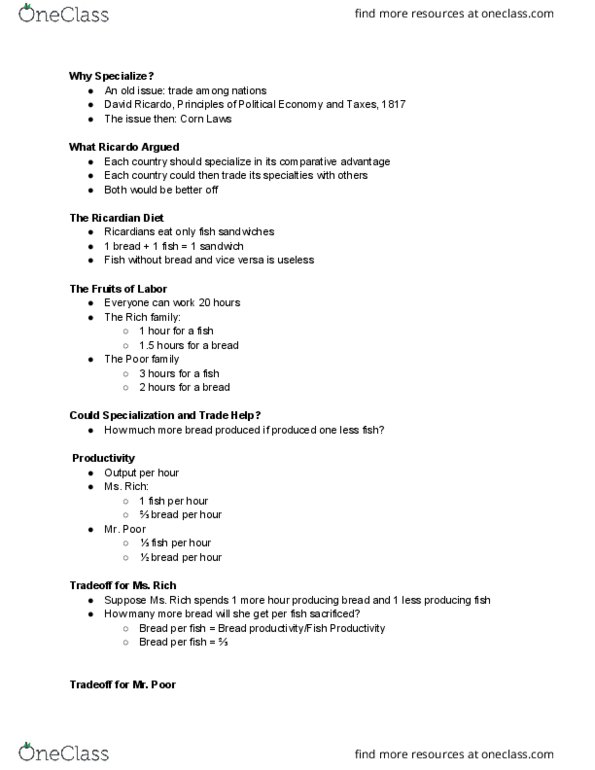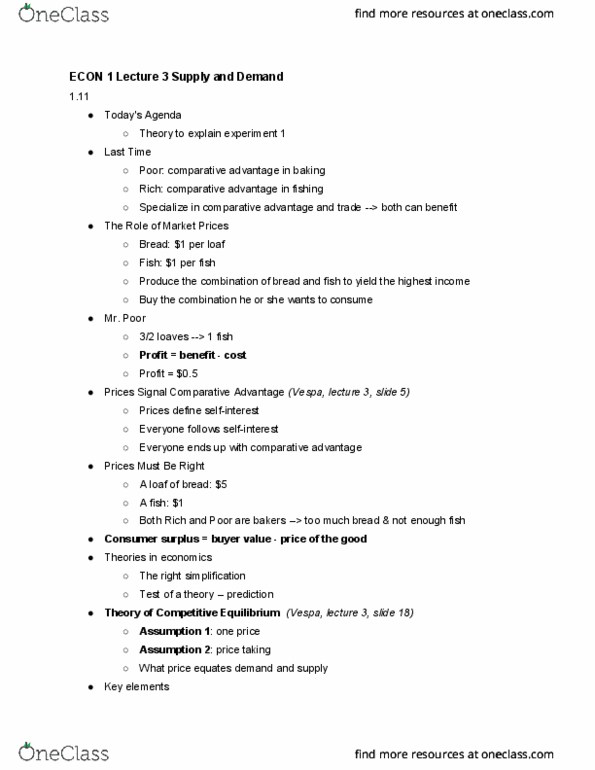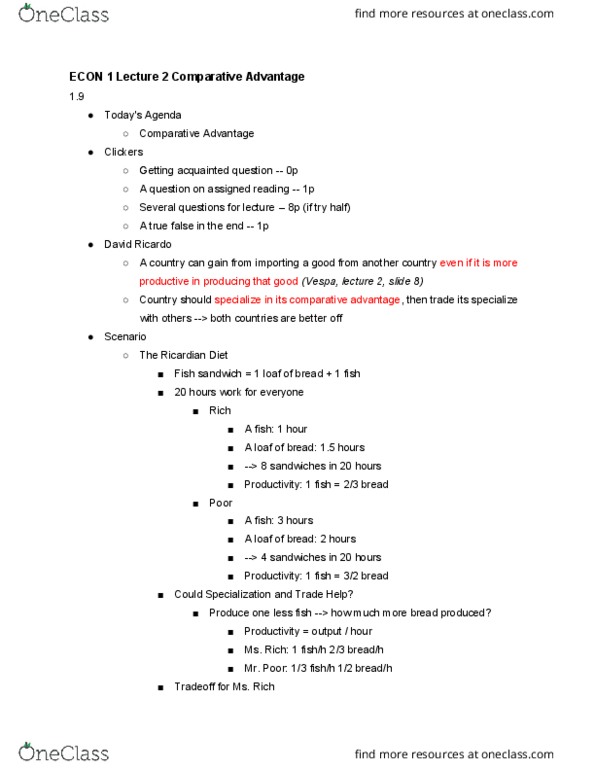ECON 1 Lecture 2: ECON 1-Lecture 3-Supply and Demand
ECON 1 verified notes
2/30View all
ECON 1 Lecture 3 Supply and Demand
1.11
● Today's Agenda
○ Theory to explain experiment 1
● Last Time
○ Poor: comparative advantage in baking
○ Rich: comparative advantage in fishing
○ Specialize in comparative advantage and trade --> both can benefit
● The Role of Market Prices
○ Bread: $1 per loaf
○ Fish: $1 per fish
○ Produce the combination of bread and fish to yield the highest income
○ Buy the combination he or she wants to consume
● Mr. Poor
○ 3/2 loaves --> 1 fish
○ Profit = benefit - cost
○ Profit = $0.5
● Prices Signal Comparative Advantage (Vespa, lecture 3, slide 5)
○ Prices define self-interest
○ Everyone follows self-interest
○ Everyone ends up with comparative advantage
● Prices Must Be Right
○ A loaf of bread: $5
○ A fish: $1
○ Both Rich and Poor are bakers --> too much bread & not enough fish
● Consumer surplus = buyer value - price of the good
● Theories in economics
○ The right simplification
○ Test of a theory -- prediction
● Theory of Competitive Equilibrium (Vespa, lecture 3, slide 18)
○ Assumption 1: one price
○ Assumption 2: price taking
○ What price equates demand and supply
● Key elements
Document Summary
Specialize in comparative advantage and trade --> both can benefit. Produce the combination of bread and fish to yield the highest income. Buy the combination he or she wants to consume. Prices signal comparative advantage (vespa, lecture 3, slide 5) Both rich and poor are bakers --> too much bread & not enough fish. Consumer surplus = buyer value - price of the good. Theory of competitive equilibrium (vespa, lecture 3, slide 18) Demand schedule: quantity demand at each price. Supply schedule: quantity supply at each price. Equilibrium: a price where demand = supply. Constructing supply and demand schedules for exp. Distribution of buyer values --> quantity demand at every price. Distribution of seller costs --> quantity supply at every price. Distributions of buyer values and seller costs --> market fundamentals. Profits (vespa, lecture 3, slide 41) (vespa, lecture 3, slide 31)




